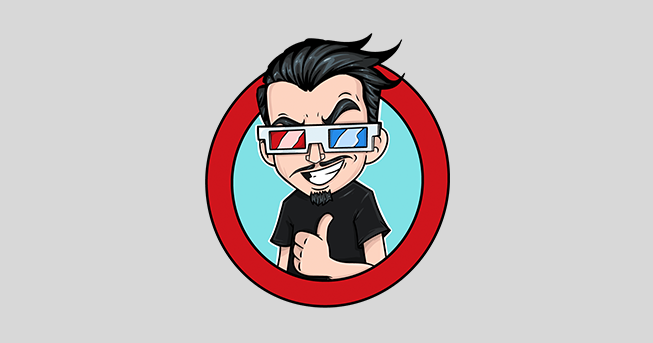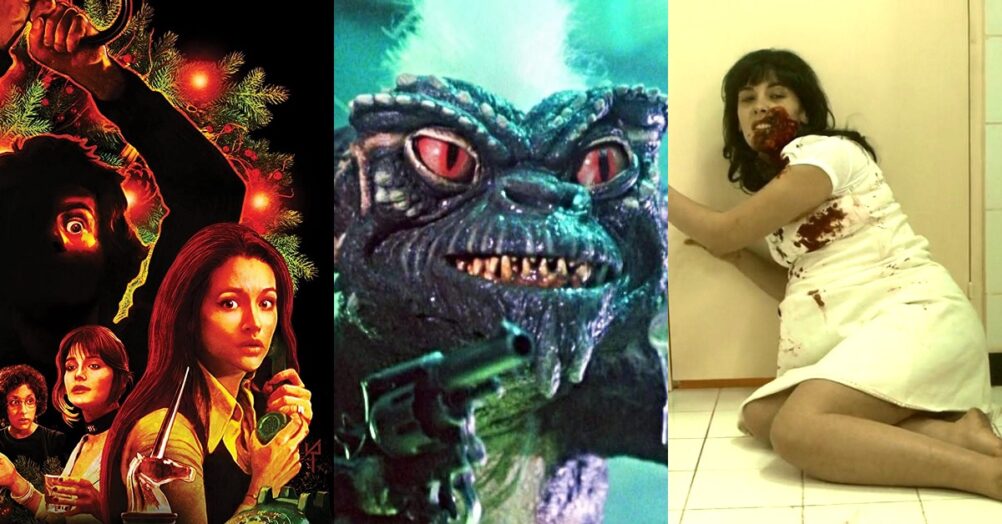
I had not seen Brian Helgeland’s heist, revenge flick PAYBACK
when it originally landed in the theatres (although JoBlo apparently
had a blast with it back in 1999, as it ended up in his top 10 of
that year…read his review HERE).
In fact, only recently did I get to witness it just before I
headed to the beautiful Arclight Cinema in
Hollywood
,
California
. And truth be told, I
happened to enjoy the atmospheric PAYBACK:
STRAIGHT UP Directors Cut much better than the original
studio version.
What about it worked? Well, the
most important thing for me was the ending.
Without giving anything away, it’s nice to see a darker and
more somber ending where things aren’t all sunshine and roses,
especially in a movie starring Mel Gibson.
With the original, it was upbeat and almost felt apologetic
to the audience by saying, it is okay that he’s a bad guy, because
he will straighten out. And
everything will be happily ever after.
It was nice to see the riskier “Straight Up” final
moments yet I did kind of miss Kris Kristofferson, as he is played
here as a voice only by Sally Kellerman.
Yep… hot lips… yet as I said, she is on speaker phone
only.
I also appreciated the lack of voiceover from Mel.
I got what was going on and did not need it reiterated
throughout the film. Yes, it
made the original feel more “noir” than this and it didn’t
hurt the film necessarily, but I appreciated figuring it all out for
myself. Mel Gibson gives a
strong enough performance without having to rely on “telling”
the audience his thoughts and plans. It
didn’t need it.

There were other changes made and some were hit and miss.
The truth is both films work on different levels.
Gregg Henry is superb as the best buddy who f*cks Porter over
for a few dollars more. Maria
Bello is lovely as Rosie yet she gets to play a little more on the
bad guy side in the original. And
if you are a dog lover, you may really appreciate the original more.
Brian Helgeland, either way, made a pretty damn good Mel
Gibson movie. And sadly,
audiences had a hard time dealing with Mel being a bad guy.
Maybe with his recent gossip-worthy actions, PAYBACK might
have found an audience today. And
thanks to DVD, you can decide which one is worth your time.
But if you prefer a little darkness as opposed to light, you
might want to go Straight Up with Helgeland’s version (you can
read our very own DVD CLINIC’s review of that DVD HERE).
After watching his rich in atmosphere revenge drama, the audience had the
pleasure of listening to Brian answer a few questions with moderator
James Ellroy, author of THE BLACK DAHLIA and
L.A.
CONFIDENTIAL as moderator. It
was an unusual night. Listening
to Mr. Ellis felt like watching some old comedienne practice his
shtick. Yes, he was funny,
but often times he seemed to just want to hear himself say
“f*ck”. He is a terrific
writer, but his questions seemed to drift as he went on to talk
about things that are “sorrowful” and again… to say
“f*ck”. Don’t get me
wrong, the dude is interesting, but he took a little bit away from
the man who actually directed the film all of us had gathered to
watch. Read on to hear a
little about what transpired that night.
| James Ellroy |
Brian Helgeland |
 |
 |
James
Ellroy:
How many times can you say the words, “f*ck” and
“porter”? How many
cigarettes can
you smoke?
How much booze can you guzzle?
How many sleazoid women can you ogle?
How many people
can you kill? How many
goons, gophers, pimps, ho’s and overall pieces of shit can you
work over and maim? The answer is, in
Brian Helgeland’s world, a great many.
But much more importantly, why do
we need to desensitize ourselves to death so horribly and why do we
find such a horrible, bleak and sorrowful
beauty in crime? I
don’t f*cking know. But
I get the feeling that Brian Helgeland will tell us tonight.
I am gonna sit down and I am gonna ask questions of Brian
Helgeland. I am the
interlocutor, he is the suspect.
I may beat him with a phone book or a beaver tail sap in
order to exact the truth. Why’d
ya make this f*cking thing? And
Mel Gibson is really short and ape-like.
And where did you get these cheesy, snake-like,
bleached-blonde, acne-scarred women?
I know your wife; she’s a big, good-looking, handsome
woman. Older than you by
several months… why Brian… I’m listening?
Brian Helgeland: Um… I have
to just give straight answers, I can’t compete so…
I wanted to direct, so I wrote this script to direct.
I was on a dub stage – an ADR stage – at Warner Brothers
where we were doing ADR for “Conspiracy Theory”, which I had
written. And the
director couldn’t get there and I started the session and I had
half the script in my hand, Mel looked through it and said he wanted
to maybe do it. That was
the beginning of it.
JE:
What kind of handle did you have on the themes going in?
BH: I wanted to do something
simple. Take a man who
is about momentum and balance and he lost him momentum and balance
when he got double crossed, in a situation he should have seen
coming a mile away, that he didn’t see. And
he’s trying to get that momentum and balance back.
And by the end he feels like he’s hitting on all cylinders
again. That was it.
That was the entire… momentum and balance and how someone
who’s off his game can get back on it.
JE:
How do you feel about the movie [“Point Blank”, the
original for which this is based] and how do you think it holds up?
BH: You know, I’ve only
seen it once and it was about ten years ago.
And I like anything Lee Marvin’s in… but I was never… I
was aware of “Point Blank” and aware of where it stood in the
cinematic world and I wasn’t interested in trying to top that, or
trying to compete with that. I
had gone back to the novel that the whole thing was based on [“The
Hunter” by Richard Stark]. That’s
where I started; I started off by reading the book and thinking that
this could be… I didn’t even know that, because the book’s
called “The Hunter”, I didn’t even know at first that “Point
Blank” was based on it, Donald Westlake writing under a pseudonym.
But I read the book and thought it could be a little, tiny
crime movie and maybe someone would give me the money to do it.
So I wasn’t thinking “Point Blank” at all really, to
start.
JE:
Would you like to talk about Richard Stark, the penname of
Donald Westlake, and his Parker books?
BH: Yeah.
I find Donald Westlake very interesting because he writes a
lot of comic novels under his own name, “The Dortmunder”, heist
movies and crime movies, “The Hot Rock” being one of the ones
that got made into a film years ago.
And his alter ego, he writes under the name Richard Stark and
it’s completely different. It’s
this guy Parker, and Westlake won’t let anyone use the name so you
have to come up with a different name for him.
So in “Point Blank” it was Walker, in another movie – I
think Jim Brown played him once – another name, I called him
Porter because it was as close to Parker as I could get.
I guess there was something so simple about him and so
unapologetic. You just
follow this criminal around doing his business.
I always thought they were great and very cinematic.
JE:
How aware were you at the moment of how the satirical power
of the film would accrue [in regards to the constant use of the name
“Porter]?
BH: I was trying to just
build it a certain way; I wasn’t… that part of it I wasn’t
planning out so much. I
knew there was power to his name when it got said.
But I didn’t plan it any further than that.
But I just knew it had a strength to it… that name.
JE:
Can I ask you about the visual design of the film?
Is it the 1970’s that we’re looking at?
BH: No, no, what we wanted to
do is create a world of “Palookaville”… The City… that kind
of world where you don’t know… we shot it in LA and New York and
Chicago and we had a rule on cars, they could be anywhere from ’66
to ‘88 I think. [We]
tried to create a world where… and the costume design also, it
looked like you could be wearing those clothes in the 70’s but if
you had them on here in the 90’s when we made it, you wouldn’t
look out of place. So it
was very much trying to create a kind of nowhere place that you
couldn’t quite figure out where you were.
Which I think is the great thing you can do in a movie world
and if you do it well and the audience accepts that world, then
they’ll accept what’s going on in the movie.
JE:
The visual design itself is in the bright, bright red in the
titles… that’s out of the Seventies.
BH: Yeah, I think that was…
those were, I think the “Shaft”… I think they were the same
titles as “Shaft” had.
JE:
There’s a sub-genre that I love that we discussed many
times that plays into this, and that’s the “heist gone bad”.
Where fallibility surfaces… and the flawed psychology of
the various characters asserts itself and everything gets f*cked.
It’s a variation of the great film noir theme of “yer f*cked”
[Laughter]. Were you
thinking of that? Were
you thinking of revenge flicks, of heist gone bad flicks, evil, bad,
sordid love flicks, when you wrote this?
BH: Yeah, I was thinking…
In all those movies it’s never the crime that goes wrong, it’s
the aftermath of the crime.
Where you learn people’s motivations and things; they
can’t keep quiet. They
spend the money. They
alert the police one way or the other.
They go out and buy Cadillac’s.
They do all these things because they don’t really have a
plan of anything past the crime.
It’s just about the crime and pulling it off and no one has
thought beyond that. So
once the really do pull the crime off things fall apart because they
don’t look past that.
Let me know what you think. Send
questions or comments to [email protected].


















Follow the JOBLO MOVIE NETWORK
Follow us on YOUTUBE
Follow ARROW IN THE HEAD
Follow AITH on YOUTUBE